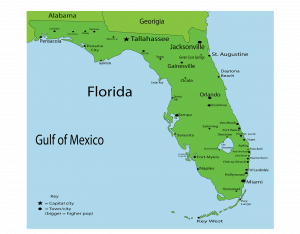How is fair market value determined?
To determine the fair market value of an asset at the time of the original owner’s death, it is often necessary to hire a qualified appraiser to provide an appraisal report.
This report should include a detailed description of the appraised property, along with an explanation of the valuation methods used and any assumptions made during the process.
The valuation date is typically the date of the original owner’s death. However, there are exceptions.
For instance, if the estate qualifies for the alternate valuation date, you can set this date to six months after the date of the original owner’s death. The estate may elect to use the alternate valuation date if the total value of the estate at that time is lower than the total value on the date of the original owner’s death.
Step-up basis capital gains or losses
The step-up in basis is a significant benefit for heirs, as it can help reduce the capital gains tax they may owe when selling inherited property. If the heir sells the property for an amount equal to or less than the stepped-up basis, they will not owe any capital gains tax. However, if they sell it for more than the stepped-up basis, they will be liable for capital gains tax on the difference between the sale price and the stepped-up basis.
For example, suppose an individual inherits a stock portfolio from their deceased parent. The value of the portfolio at the time of the parent’s death is $500,000, while the parent originally purchased it for $200,000. If the heir sells the stock portfolio for $600,000, their capital gains tax liability will be based on the $100,000 difference between the sale price and the stepped-up basis.
Conversely, if the heir sells the stock portfolio for $450,000, they will not owe any capital gains tax, since the sale price is less than the stepped-up basis.
It’s also important to note that any sale of inherited property qualifies for long-term capital gains tax treatment, regardless of when the heir sells the property—whether a year or just a month after the time of death.
Step-up in basis estate tax
Contrary to popular belief, the step-up in basis for real estate is not just a loophole that wealthy families exploit to avoid estate taxes when transferring wealth across generations. Instead, it provides a significant benefit to the decedent during their lifetime by reducing their income tax liability.
Consider this: A real estate investor who fully depreciates a rental property can enjoy the advantage of showing paper losses against their income tax liability over many years—specifically, for 27.5 years for residential properties. Unless they choose to utilize a 1031 exchange, when the investor eventually sells the property, they typically will have to pay not only capital gains tax but also a depreciation recapture tax at a rate of 25%.
This means that the tax savings from depreciation are essentially a temporary benefit that the surviving spouse pays back at the time of the sale (assuming it is for more than the remaining cost basis). However, if the investor never sells the property, they effectively benefit from a reduced income tax liability for many years to come.
In this context, it doesn’t seem fair for the next generation to be responsible for any capital gains taxes resulting from the investor’s death.
Step-up in basis is not an estate tax loophole.
When an heir inherits a rental property, they pay taxes on its full fair market value. This value is deducted from the deceased’s lifetime estate and gift tax exemption, meaning that the estate tax cannot be entirely avoided through the step-up in basis.
This approach is relatively fair. In certain markets, such as New York City before 2020, real estate is a form of tax arbitrage. In these instances, depreciation represented a paper loss, regardless of the property’s actual age.
For example, an older townhouse or condominium in the West Village continues to appreciate over time. Conversely, markets like South Florida often experience genuine depreciation. This depends on factors such as a lack of supply constraints, weather-related wear and tear, and a general preference for newer properties.



